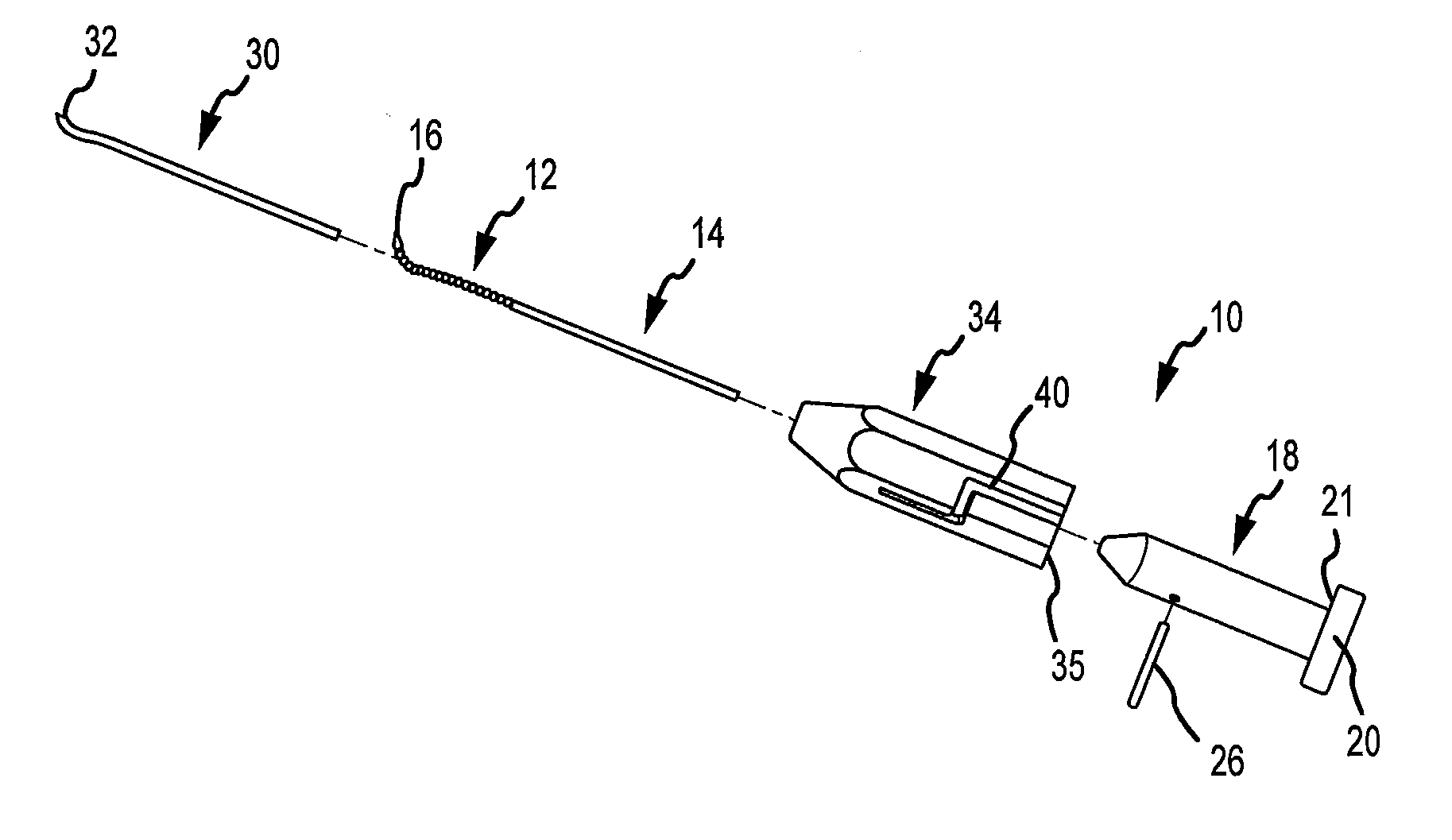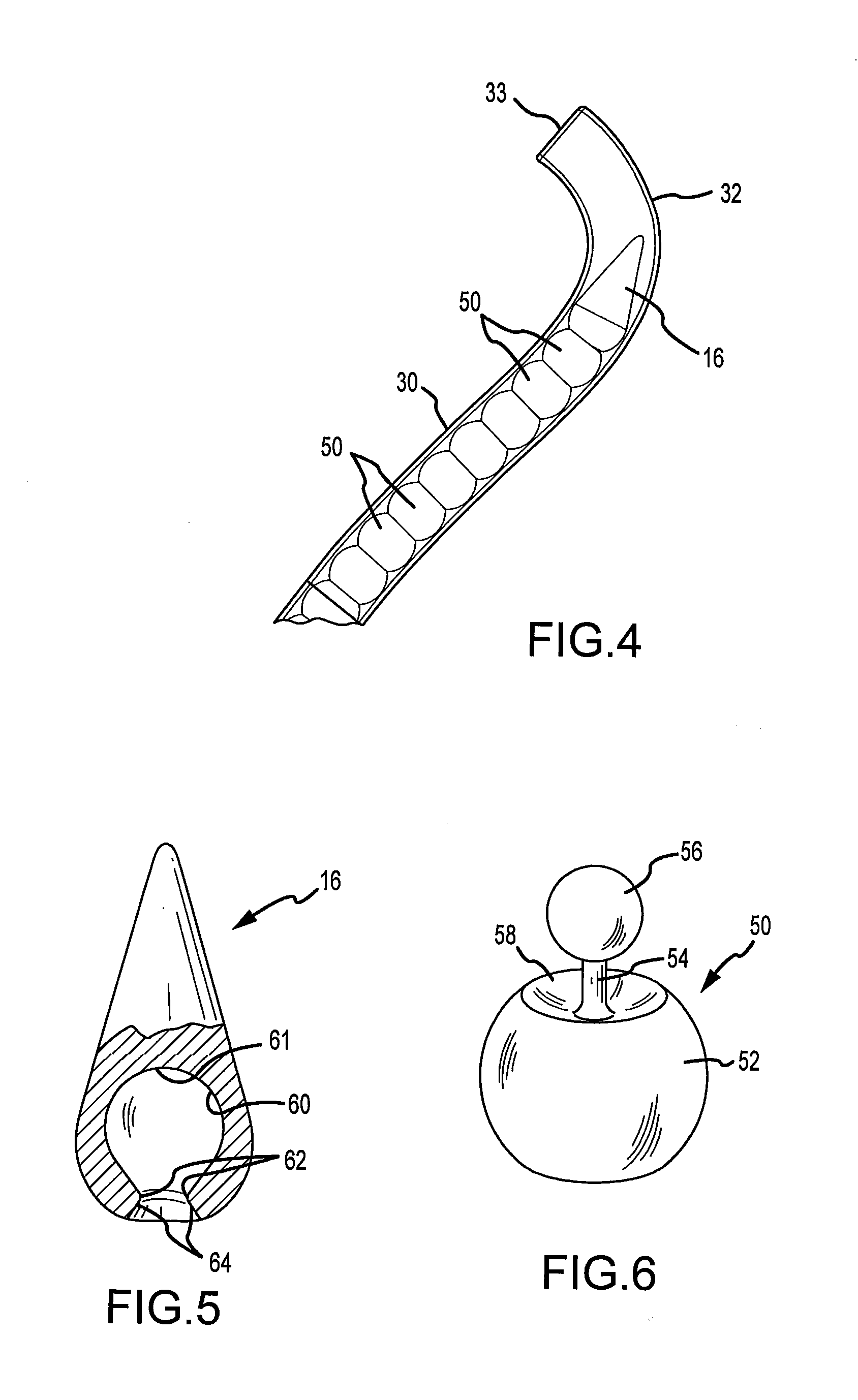Microfracture awl
a micro-fracture and awl technology, applied in the field of cartilage repair, can solve the problems of fibrin clot formation, bone marrow migration, and significant pain of patients, and achieve the effect of satisfying the cost of manufacturing and sterilization parameters
- Summary
- Abstract
- Description
- Claims
- Application Information
AI Technical Summary
Benefits of technology
Problems solved by technology
Method used
Image
Examples
Embodiment Construction
[0026]Referring to FIGS. 1-3, the microfracture awl 10 is illustrated. The microfracture awl 10 includes two subcombinations. The first subcombination comprises an articulating portion 12 of the awl, a rigid shaft 14, and a base 18. The proximal end of the articulating portion 12 connects to a distal end of the rigid shaft 14. The rigid shaft 14 attaches at its proximal end to a distal end of the base 18. The proximal end of the base 18 may include an enlarged portion or cap 20 that is struck by a mallet (not shown) to transfer force through the awl to the bone. The base 18 is shown as having a substantially cylindrical shaped body 22 and a distal converging portion 24. A retention pin opening 27 is formed transversely through the body 22 and receives a retention pin 26. The awl tip 16 of the articulating portion 12 makes contact with and is driven through a targeted subchondral bone plate as explained below.
[0027]The second subcombination comprises a guide sleeve 30 having a diamet...
PUM
 Login to View More
Login to View More Abstract
Description
Claims
Application Information
 Login to View More
Login to View More - R&D
- Intellectual Property
- Life Sciences
- Materials
- Tech Scout
- Unparalleled Data Quality
- Higher Quality Content
- 60% Fewer Hallucinations
Browse by: Latest US Patents, China's latest patents, Technical Efficacy Thesaurus, Application Domain, Technology Topic, Popular Technical Reports.
© 2025 PatSnap. All rights reserved.Legal|Privacy policy|Modern Slavery Act Transparency Statement|Sitemap|About US| Contact US: help@patsnap.com



